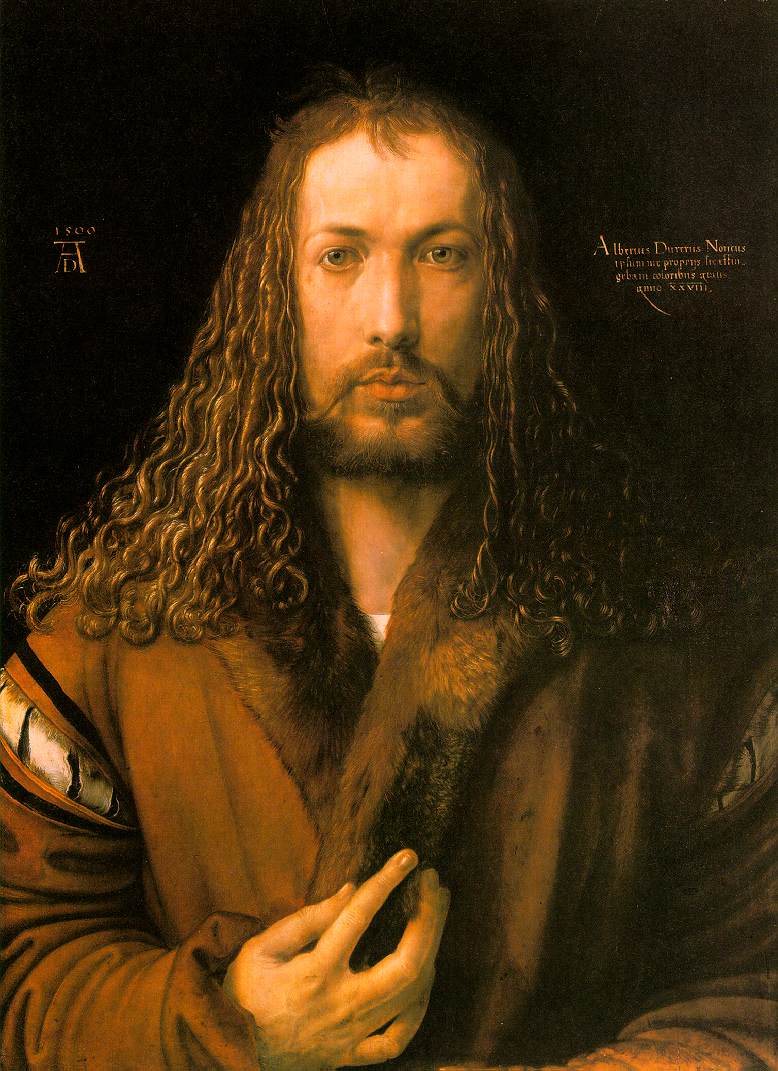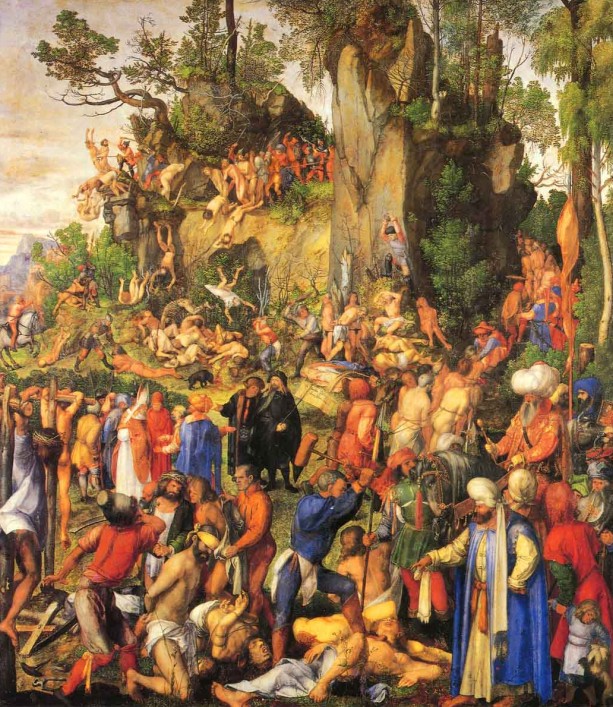A painter's icon throughout the ages----Albrecht Durer
Albrecht Durer was the first German artist to emerge north of the Alps who achieved a highly developed artistic self-awareness based on the model of the Italian Renaissance, as well as a high degree of acceptance in society. Being German, he continued throughout his life to receive important artistic stimuli from the Netherlands and Italy. While Durer was more strongly influenced by Flemish art during his early period, possibly a result of the Franconian workshop tradition of his master Michael Wolgemut, in the period after his journeys to Italy he mainly worked with ideas from the Italian Renaissance which enabled him to create new images. Renaissance, as well as a high degree of acceptance in society. Being German, he continued throughout his life to receive important artistic stimuli from the Netherlands and Italy. While Durer was more strongly influenced by Flemish art during his early period, possibly a result of the Franconian workshop tradition of his master Michael Wolgemut, in the period after his journeys to Italy he mainly worked with ideas from the Italian Renaissance which enabled him to create new images.
He was born on 21 May 1471, third child and second son of his parents, who had between fourteen and eighteen children. His father was a successful goldsmith, originally named Ajtósi, who in 1455 had moved to Nuremberg from Ajtós, near Gyula in Hungary. The German name "Dürer" is derived from the Hungarian, "Ajtósi". Initially, it was "Thürer," meaning doormaker, which is "ajtós" in Hungarian (from "ajtó", meaning door). A door is featured in the coat-of-arms the family acquired.
His godfather was Anton Koberger, who left goldsmithing to become a printer and publisher in the year of Albrecht Durer's birth. He quickly became the most successful publisher in Germany, eventually owning twenty-four printing-presses and having many offices in Germany and abroad. His most famous publication was the Nuremberg Chronicle, published in 1493 in German and Latin editions. It contained an unprecedented 1,809 woodcut illustrations (with many repeated uses of the same block) by the Wolgemut workshop. Albrecht Durer may well have worked on some of these, as the work on the project began while he was with Wolgemut.
 It is fortunate Albrecht Durer left autobiographical writings and that he became very famous by his mid-twenties. Because of this, his life is well documented by several sources. After a few years of school, Albrecht Durer started to learn the basics of goldsmithing and drawing from his father. Though his father wanted him to continue his training as a goldsmith, he showed such a precocious talent in drawing that he started as an apprentice to Michael Wolgemut at the age of fifteen in 1486. A self-portrait, a drawing in silverpoint, is dated 1484 (Albertina, Vienna) “when I was a child”, as his later inscription says. Wolgemut was the leading artist in Nuremberg at the time, with a large workshop producing a variety of works of art, in particular woodcuts for books. Nuremberg was then an important and prosperous city, a centre for publishing and many luxury trades. It had strong links with Italy, especially Venice, a relatively short distance across the Alps. It is fortunate Albrecht Durer left autobiographical writings and that he became very famous by his mid-twenties. Because of this, his life is well documented by several sources. After a few years of school, Albrecht Durer started to learn the basics of goldsmithing and drawing from his father. Though his father wanted him to continue his training as a goldsmith, he showed such a precocious talent in drawing that he started as an apprentice to Michael Wolgemut at the age of fifteen in 1486. A self-portrait, a drawing in silverpoint, is dated 1484 (Albertina, Vienna) “when I was a child”, as his later inscription says. Wolgemut was the leading artist in Nuremberg at the time, with a large workshop producing a variety of works of art, in particular woodcuts for books. Nuremberg was then an important and prosperous city, a centre for publishing and many luxury trades. It had strong links with Italy, especially Venice, a relatively short distance across the Alps.
During his final years Durer endeavored to support practice with theory. He had already prepared the first two volumes of his treatise on proportions before his journey to the Netherlands, and he continued working on them after his return. Due to the numerous geometrical drawings and illustrations needed to serve his didactic purposes, and the necessary study of classical sources, the completion of the work on proportions was delayed. Since his first stay in Venice, Durer had worked on the theory of the ideal human proportions. Durer linked the depiction of body types with differing proportions to the teaching of the four humors, and as such was the first to indicate the connection between build and character. The first volume dealt with basic geometrical terms such as the point and line, the second dealt with surfaces and bodies, and the third and fourth volumes were dedicated to both the ideal depiction of bodies and the construction of columns, letters and sundials. In the appendix, the reader, artist and craftsman can find a short treatise on perspective and instructions for the use of drawing equipment. The treatise on proportions was published posthumously by Willibald Pirckheimer and Durer's wife Agnes.
Without any doubt, Albrecht Durer is a great painter.
Edited by Xiamen Romandy Art Limited.
(Professional Oil Paintings suppliers from China. If you want to convert your photos into high quality oil paintings, or you want the masterpiece oil painting reproductions, please don's hesitate to contact with us.)
Romandy Art Website: http://www.oilpaintingcentre.com
Email: romandyart@gmail.com
A painter's icon throughout the ages----Albrecht Durer
|